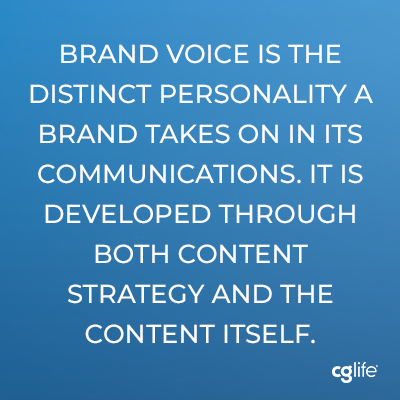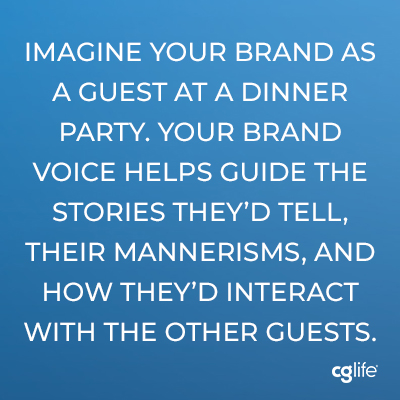

Finding Your Brand’s Voice And Persona
Anyone who’s downloaded Duolingo to learn a new language knows the app seems to have a personality of its own. From their persistent push notifications to their silly, on-trend TikTok account (which boasts over 2.8M followers!), the brand’s out-there voice and persona have become a bit of an internet sensation.
Partially responsible for Duolingo’s popularity is its cohesive tone and clear brand voice. From Duolingo’s playful videos to Wendy’s snarky Tweets, we all have brands that we engage with because of their personalities. Brands today have increasing freedom (and pressure) to craft a signature brand voice that helps them connect with audiences more than ever before.
Meet Your Newest Teammate: Your Brand
Brand voice is the distinct personality a brand takes on in its communications. It is developed through both the content itself (the media the brand chooses to create) and the content strategy (the ways in which that content is disseminated).


Personifying your brand helps you, as a marketer, develop a consistent story across all channels and mediums, which:
- Makes for a cohesive story for your audiences.
- Helps you determine how to apply tactics and react to news and industry trends.
Humans are hard-wired to connect with other people. Giving your brand a personality provides consumers with something to react to. Audiences have become increasingly proficient in seeing through transparent brand strategies, and surveys show that 86% of consumers say authenticity is a key factor in deciding which brands to support. To stand out from the competition, brands must create compelling content that audiences can connect with.
How to Build a Brand Persona
Imagine your brand as a guest at a dinner party. Your brand voice helps guide the stories they’d tell, their mannerisms, and how they’d interact with the other guests.
Ask yourself: If the brand were a person, who would they be? A sophisticated socialite? A rebellious rule-breaker? A trailblazing techie? Some questions to ask yourself and your team:
- What are the demographics of our persona? Are they young or old, male or female? These insights might be based off key metrics from your current audience, or strategic goals of groups you hope to reach.
- What’s their personality like? Are they loud and bubbly, mysterious and aloof, highbrow and sassy?
- What do they like and dislike?
- What are their goals, hopes, desires, and fears?
A deep understanding of the answers to these questions will inform how to build a brand persona and frame the voice your brand takes on. It’ll guide whether you respond to a Tweet with a funny quip or an inspirational quote. And, most importantly, it’ll help your audience form a deeper understanding of who you are as a brand.
Giving Your Brand’s Persona a Voice
Now that you understand your brand’s persona, it’s time to develop its voice. Here are some quick tips:


Consistency is Key
Your brand should convey a similar tone across all tactics. If you are just getting acquainted with a new brand, familiarize yourself with their existing literature. Read what others have written, paying attention to how the words they use make you feel. This will be critical in adapting your writing to match theirs.
Adapt to Each Channel
Recognize that different campaigns, audiences, and mediums may require different tones, and you may need to adapt your writing to them. You may take a more formal tone in a white paper meant for a board of directors, and a more playful one on social media.
Take a Holistic Approach
The goal is to make your tone so consistent that your audience can identify your brand, even without logos and brand colors. But storytelling is a visual art, and design should always play off messaging, and vice versa. Think about how visual cues support (or detract from) your brand story.
Set Parameters
Now that you’ve developed brand guidelines, stick to them. Developing a brand playbook that includes tone will help set expectations and ensure that everyone on your team is working towards a similar goal. You may appoint someone on your team to check pieces for consistency.
Remember not to take the process too seriously. Developing a brand voice is a chance to flex your creative muscles and have some fun along the way.
If you’re looking to find your brand’s true voice and persona, or maybe looking to explore a re-brand, CG Life is here to help! Give us a shout, and we’d be happy to chat.
